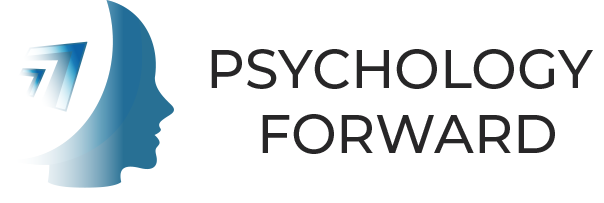
What is Social (Pragmatic) Communication Disorder? Diagnosis and Treatment
Social (Pragmatic) Communication Disorder (SCD) is one of the most confusing disorders for parents and teachers to understand. It is a relatively new disorder, first appearing in the Fifth Edition of the Diagnostic Statistical Manual (DSM-5) in 2013. The origins of SCD are in the speech and language literature. This literature was the first to identify pragmatic language impairment as a distinct characteristic of language. While speech and language literature have long recognized the educational and social implications of pragmatic language impairments, it has been only recent that the psychological community has been able to make important distinctions of such impairments with classical Autism Spectrum Disorders.
Its recent inclusion into the DSM-5 makes it a relatively unknown disorder for educators and parents alike. Many of my colleagues in fact, have not yet had the opportunity to diagnosis Social (Pragmatic) Communication Disorder. In my professional practice, I have had the opportunity to diagnosis Social Pragmatic Communication Disorder with several youngsters that I have evaluated. In this article, the unique characteristics of Social (Pragmatic) Communication Disorder and interventions will be discussed, in order to advance the understanding of this unique disorder for psychologists, educators and parents.
Children who are diagnosed with SCD fundamentally have difficulties with social interaction and the pramgatic use of language. It is important to distinguish that their language is not impaired in the same way that is observed with Children with Autism Spectrum Disorders (ASDs) . Most children with ASDs have expressive and receptive language deficits that impair their communication. Children with SCD shave difficulties using language in the proper context and struggle with the semantic use of language.
Teachers usually report the following classroom behaviors:
- Difficulty interacting with peers, especially in unstructured settings. Children with SCDs often have the most difficulty in physical education, art and musics classes. They also tend to struggle during recess and in extracurricular activities.
- They often struggle with the transition from independent to group work.
- These children have difficulty processing multi-step directions, especially those that require strong inferencing skills.
- Teachers report that these children are unaware of other people’s feelings. They have tendency to “talk at” and not “with” people.
- Difficulty staying on task.
- Difficulty talking about emotions and feelings.
- Trouble with taking turns.
Symptoms of Social (Pragmatic) Communication Disorder
Children with SCDs struggle with the appropriate use of social communication. Deficits are present in using social communication for social purposes such as greeting and sharing information. In addition, it is difficult for SCD children to master the ability to change communication to match the context or the needs of the listener. For example, I recently evaluated a child who had difficulty with understanding and executing the normal flow and reciprocity of conversation to match contextual differences. To illustrate, this child had difficulty speaking differently in the classroom versus on recess; talking differently to a child than an adult.
The rules governing conversation need to be systematically taught because they do not develop naturally. Children with SCDs need to be taught skills such as speaking in turn and regulating conversation in response to feedback from others.
As a result of these difficulties, peers tend to avoid interactions with such children. Different from children with classic Autism, most children with SCDs have a sincere desire to connection with others. If it fairly common for them to compensate for their social difficulties by dominating and monopolizing conversations. Furthermore, they struggle with the following:
- Listening to others.
- Considering the points of view of others.
- Developing cognitive shift: Their thinking and language expression is overly egocentric and rigid. The lack of cognitive shift and flexibility of mind renders if difficult for them to establish reciprocity in conversation.
Children Social (Pragmatic) Communication Disorder possess language that is fluent and appropriate. However, their language is not appropriately used in social contexts. They exhibit difficulty with understanding and producing conversational discourse.
Ultimately, these difficulties impede the ability to initiate and sustain friendships.
Emotion concerns of children with Social (Pragmatic) Communication Disorder
Children with SCDs are highly susceptible to developing depression and anxiety. They tend to experience:
- A sense of loneliness
- Isolation
- Disconnection from peers
- Social anxiety
They are susceptible to significant psychosocial struggles unless progress in social communication skills is made.
How is Social (Pragmatic) Communication Disorder diagnosed ?
If you suspect your child may have have SCD, he or she should be evaluated by a licensed psychologist. The psychological evaluation should investigate the following:
- Cognitive ability and educational achevement to rule out a learning disability.
- Attention capacity
- Executive functioning
- Social and motional functioning
- Function of behavior
Typically such an evaluation will be gathered through:
- Interviews
- Questionnaires
- Standardized assessment compared to normative data
- Observations
Medical, educational and developmental history is always taken into account as well. It is important to ascertain if a family members have been diagnosed with a communication impairment, ASD, learning disability, ADHD, or another related disorder.
One of the essential tasks for the psychologist is to determine if the symptoms are related to an Autism Spectrum Disorder diagnosis (ASD). This differential diagnosis is difficult due to the overlap in symptoms between ASDs and SCDs. A child diagnosed with an ASD does have communication problems, but also, restricted, repetitive patterns of behaviors, interests or activities. The DSM-5 gives equal weight to language difficulties and receptive patterns of behavior in diagnosing ASD. Therefore, it is crucial to rule out an ASD in order to diagnosis SCD.
It is important to emphasize that SCD is a new diagnosis. Many individuals who qualify for an SCD now, were previously diagnosed with Pervasive Developmental Disorder, Not Otherwise Specified, (PDD-NOS) or Asperger’s Syndrome under the DSM-IV criteria. The new diagnosis of SCD was a pivotal step in proper identification of those who were incorrectly diagnosed with an Autism related disorder. These misdiagnoses led to inconsistent treatment.
In addition, it is best practice to also have a speech and language evaluation conducted. A speech and language evaluation is critical to rule out a classic language impairment. Ideally, the speech pathologist will work collaboratively with the psychologist to analyze the findings.
DSM-5 Diagnostic code for Social (Pragmatic) Communication Disorder
- 315.39 (F80.89)
Qualifying for special education
Children with a diagnosis of SCD should undoubtedly qualify for special education services as long as it:
- Interferes with educational achievement
- Necessitates a special education service
- Fits into a special education classification. The exact classification terminology varies from state to state. Generally, children with a diagnosis of SCD should qualify for special education under the following categories:
-
- Other Health Impaired: This category encompasses several disorders such as ADHD and various medical conditions that impede academic achievement.
- Communication Impaired: This special education classification is probably the most relevant in capturing the nature of the handicapping condition observed in an SCD.
- Autism: I argue that although similar to Autism Spectrum Disorder, this classification is a misnomer. It should be avoided by school districts for finding a children diagnosed with SCD eligible for special education services under the this category.
Services to support children with Social (Pragmatic) Communication Disorders
1. Participation in Social Skills/Pragmatic Language Group is essential for children with SCDs. At a minimum, the group services provide a controlled setting to developed social communication skills among peers. This provides a unique, structured opportunity for socialization.
A major goal is to build independence in natural communications settings. Group outings and sessions conducted in specific contexts are highly recommended. In addition, group sessions should focus on improving verbal and nonverbal communication, by teaching social and play skills. Effective social skills groups should infuse the following interventions:
-
- Comic Strip Conversation (Carol Gray): are often used for conflict resolution, problem solving, and communicating feelings. These conversations can occur between two or more people through simple drawings in a comic strip format. The drawings illustrate what people are saying and doing and what they might be thinking.
- Social Stories (Carol Gray): incorporates the use of social stories to help children learn socially appropriate behaviors and responses.
- Social Scripts: involves a prompting strategy that provides children with SCDs with specific social language during targeted social situations.
- Video-based instruction: uses video recording to provide children with a model of desired behavior. Research shows this speeds of the process of social skills acquisition.
- Augmentative and alternative communications interventions (AAC) are used in more severe cases of ACDs. These interventions involve supplementing the spoke word with pictures, drawings, graph, charts, objects and gestures.
For optimal success, parents should be provided with related group materials, particularly Social Stories so they can review, reinforce and model desired specific social communication.
2. Children with Social (Pragmatic) Communication Disorders should be provided with a peer mentor/tutor for consistent meetings. The mentor/tutor should be someone whom the child can learn from through social modeling.
Classroom strategies for children with Social (Pragmatic) Communication Disorders
- Teachers should provide clear visual schedules to assist with transitions and expectations for the day.
- Repeat, and clarify directions as needed.
- Allow the child to work in a group with students who are accepting and supportive. Search for opportunities that support appropriate social interactions for the child. Avoid having activities where students “pick” a partner. Assign partners to avoid feelings of rejection. If this is not possible, facilitate the joining of groups for the childwhenever possible.
- Reinforce desired social behaviors through positive reinforcement. Praise and commend the child for listening to others.
Parenting strategies for children with Social (Pragmatic) Communication Disorders
- Encourage discussions and ask your child about characters in books movies and television shows. Discuss what they might be thinking feeling in specific situations.
- Practice taking turns in games you play with your child.
- Similar to the reading disabilities research, asking your child to make predictions on what he or she has just read is an effective strategy. Encourage your child to to periodically stop and make predictions on what will happen next in the story or text. Next have him or her record these predictions and compare them with how the story/text unfolds.
- Help your child be “cool”: Introduce your child to current trends such as popular television programs movies, and music. Practice conversing about figures and events in popular culture and encourage him or her to introduce these topics with peers at school.
- Encourage you child to participate in sports, extracurricular actives and community service projects to expand his or her social network.
Moving Forward
As with all disorders that emerge in childhood, early identification and intervention is critical. Parents and teachers who have observed the aforementioned symptoms should refer the child to a licensed psychologist for a possible Psycho-Educational Evaluation. It is vital for parents and schools to share pertinent information and work collaboratively to achieve the best possible outcome for children with SCDs.
As SCD is a relatively new diagnosis in the DSM-5, more research is needed into the challenging differential diagnosis between SCD and Autism Spectrum Disorder (ASD). In addition, research needs to advance the existing body of literature into effective interventions, specifically designed for children with SCD. Most of the interventions used presently, are variants of treatment approaches for children with ASDs. Ultimately, new evidenced-based treatments need to be available for practitioners to provide the best possible service to these children with SCDs.
Respectfully submitted,
Joseph Graybill, Ph.D.

